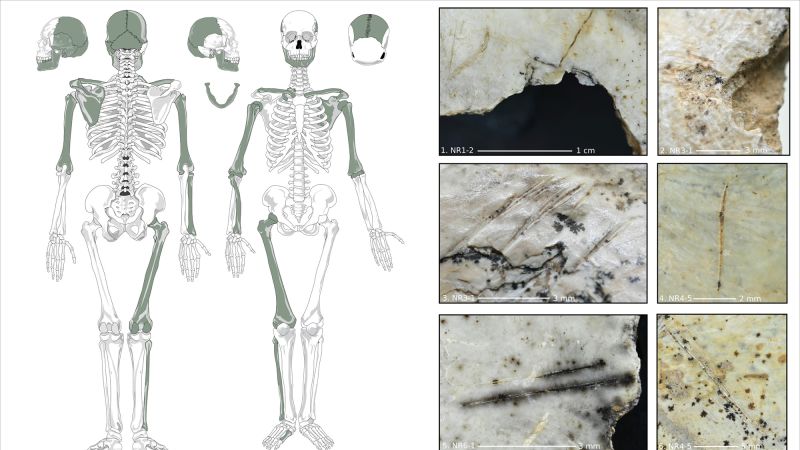A recent study, published in the journal *Scientific Reports*, presents an intriguing hypothesis about the dietary habits of ancient humans living in Europe, specifically the Magdalenian culture. This research suggests that these people might have engaged in a shocking practice—scooping out the brains from their deceased enemies and consuming them. The examination focused on the remains of at least ten individuals from the Magdalenian culture, who lived approximately between 11,000 and 17,000 years ago, a period known for its complex hunter-gatherer societies.
The examining researchers, hailing from various institutes in France, Spain, and Poland, utilized advanced imaging techniques to analyze the skeletal remains. They identified distinctive marks and cuts on the bones, particularly indicating activities related to extracting the marrow from long bones and, notably, removing the brains from skulls. These findings align with previous studies indicating that cannibalism was not an uncommon practice among the Magdalenian people, occurring both as a form of ritual and as an act of aggression.
However, Francesc Marginedas, one of the study’s co-lead authors, emphasized that this specific instance should be interpreted in the context of warfare. Unlike many Magdalenian sites where rituals involving the deceased are apparent—such as the presence of skull cups—this particular site did not exhibit such signs, suggesting a more violent motivation behind the treatment of these bodies. Marginedas, an archaeologist affiliated with the Catalan Institute of Human Paleoecology and Social Evolution in Spain, conducted this research at Maszycka Cave, near Kraków, Poland. This prehistoric site has been a focal point for archaeological studies for decades, lending it credibility to the findings.
Through the research, various theories have arisen regarding why the ancient inhabitants cut open the skulls of their victims. A notable study from the 1990s had concluded that the brains were consumed, while subsequent studies contradicted that hypothesis due to a noted absence of human tooth marks, which would typically indicate cannibalism. Marginedas, however, insists that the evidence points towards an act of violence and conflict rather than a funerary ritual. He mentioned that his team employed electron microscopes to scrutinize the bones and discovered human-made marks on 68% of them, dismissing natural causes as a potential explanation for the damage observed.
The bones analyzed included six adults and four juveniles, potentially related, though further DNA testing is required to establish familial connections definitively. Given the considerable time that has elapsed since the deaths of these individuals, Marginedas acknowledged the challenges in asserting that this incident exemplified warfare-related cannibalism.
Marginedas also conducted a comprehensive taphonomic analysis, examining the bones’ surfaces for any marks that might shed light on the historical context in which these remains were treated. This analysis revealed significant evidence suggesting that bones from the limbs were butchered and broken to access and consume the marrow, indicating a possible nutritional motive intertwined with acts of aggression.
Independent expert Bill Schutt, a zoologist and author known for his book on cannibalism, praised the quality of the study while also advising caution in drawing definitive conclusions regarding cannibalistic practices among the Magdalenian people. He argued for a broader understanding of their cultural context, asserting that there are alternative interpretations that may explain the observed behaviors beyond mere cannibalism. Schutt raised thought-provoking questions regarding the possible ceremonial or respectful motivations behind these actions, considering that some cultures engage in defleshing practices as part of their funerary traditions.
In essence, this research opens up a fascinating dialogue surrounding the complexities of human behavior in prehistoric times, particularly regarding the treatment of the dead, violence, and dietary practices within the Magdalenian culture. The study signifies the ongoing efforts of archaeologists and researchers to unravel the intricacies of ancient human life while acknowledging the limitations in understanding truly.



